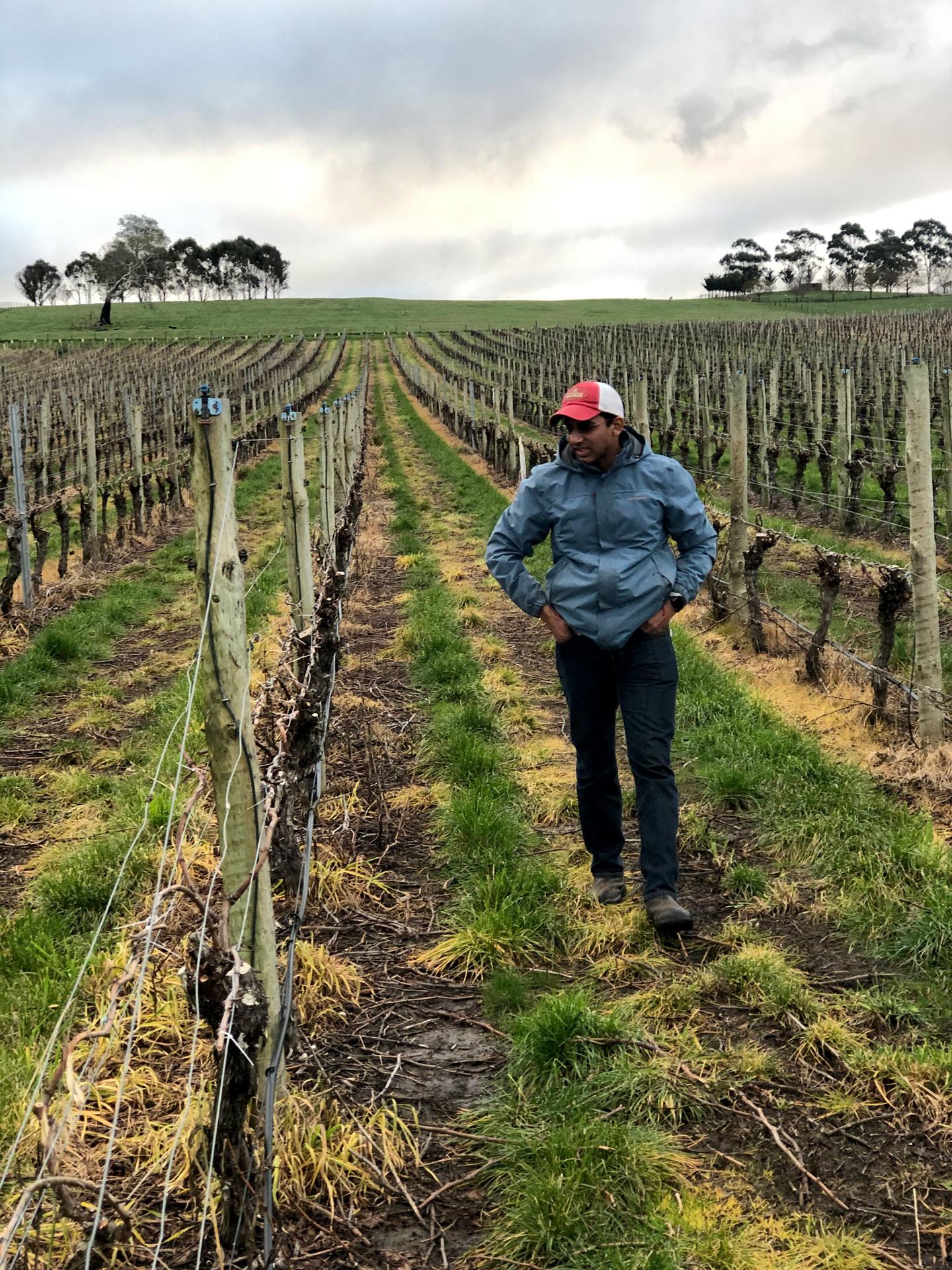Precision watering for Riverland vineyards

A new approach to grape growing that takes the science of precision watering to a new level is underway in the Riverland region.
Innovative projects led by Wine Australia and the University of Adelaide, are a huge step forward in improving water use efficiency, with growers set to soon be able to replace the water used by their vines on a daily basis.
The Riverland Regional Program project is being undertaken by Dr Vinay Pagay, lecturer in viticulture and vineyard engineering from the School of Agriculture, Food and Wine at the University’s Waite campus.
Dr Pagay and his team are currently measuring the exact changes in water usage at different growth stages of vines and are using this data to develop ‘crop factors’ for the vines. This data will then be used in conjunction with data used from the Riverland’s ongoing weather station data to calculate daily water usage for vines across the season.
Dr Vinay Pagay is working with the Riverland Regional Program to measure the exact changes in water usage at different growth stages
“It’s a pretty simple concept really. Growers will know how much water the vines have used and just replace it”, said Riverland horticultural and business consultant Chris Bennett.
“No more guess work, no more over or under irrigating, and therefore greatly improved water use efficiencies.”
“One surprising early finding of the project was that on a very well managed vineyard, around 1.25 ML of excess water had been applied by harvest. “Just think of the savings if this had been prevented by having a more accurate understanding of actual vine water usage”, said Chris.
In the next stage of the project an app will be developed to deliver daily guidance directly to growers, based upon both the grower’s closest weather station and the actual phenological stage of their vines.
Chris said the precision watering project was an extension of the Regional Automatic Weather Station Network initiative, which Riverland Wine joined in 2018 in a partnership with the local Natural Resources Management (NRM) Board.
This resulted in the NRM’s Automatic Weather Station Network being both further extended and enhanced with in-canopy sensors to better serve the local wine grape growers.
Chris said the high quality of the vineyard data has also led to the development of a suite of exciting new services for growers. For example, the CropWatch service – which helps growers improve their disease management spray timing and efficiencies – is in the process of being extended and further developed to better suit growers.
“We are in the process of developing an app to automate the CropWatch service, and this will be available to trial next season. Growers will literally receive a message on their telephone alerting them to the potential of a downy mildew risk for their property, for example, based upon data generated by their nearest weather station”, Chris said.
“This will allow them to better time and target their sprays, and if history is any guide, do a better job with less sprays as a result.”
This article was originally published by Wine Australia. Read the original article.
